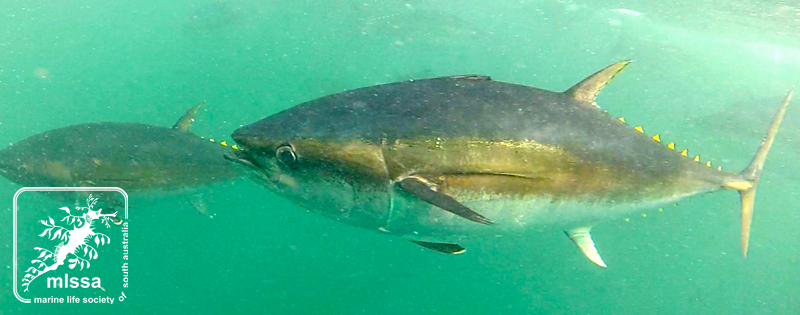This week marks the first anniversary of the Boston Bay (Port Lincoln) massive tuna deaths. Yet the SA Conservation Council asks – are we any better off 12 months later? Have we learnt any lessons from this avoidable disaster?
In April 1996, organic wastes and nutrients from the faecal wastes from the 66 caged tuna farms contributed to a phytoplankton bloom in Boston Bay. Eminent scientific experts, have clearly identified the cause of the death – a large-scale phytoplankton bloom (or “Red Tide”) – which reduced oxygen levels and caused extensive gill damage.
Experts, such as Dr Gustaav Hallegraf (University of Tasmania), a world expert in the phenomenon of `Red Tides’ has identified the cause of death of tuna in Boston Bay as a microscopic toxic alga, Chattonella marina, which has since been found in very high levels (ie. indicative of a bloom) within the livers of the tuna.
The promising $90 m a year southern bluefin tuna aquaculture industry in Boston Bay, S.A., was dealt with a devastating blow when on 12-13 April and continuing through May 1996, 75% of stocks were killed. Tuna mortalities were associated with a bloom (66,000 cells /L) of the neurotoxic raphidophyte flagellate Chattonella marina. (Hallegraf 1997).
It appears, the storm was only a contributing factor to the death of tuna in Boston Bay (stirring up the oxygen-depleted sediments and faecal wastes). Some farms reported tuna deaths 2-3 days before the storm event.
Other respected researchers, such as Dr Anthony Cheshire (University of Adelaide) and researchers from SARDI, have clearly identified the tuna farms as a major contributor to nutrient and organic loads within the bay. Poor flushing of waters within the bay, and a history of pollution within the bay, resulted in SARDI researchers actually predicting the eventual disaster as early as January 1993 (Advertiser, 10 August 1996). The State government, eager to please the demands of the tuna industry, ignored all scientific warnings, and are now trying to convince the public of South Australia, that the disaster was natural, and not the result of poor environmental management and monitoring.
Twelve months later, the same warm Indian summer conditions prevail in South Australia. Windless, sunny days – ideal for the growth of deadly phytoplankton. Over the past few months, almost a dozen blooms have been recorded in the sheltered bays of Boston Bay, and Spencer Gulf and also, Gulf St Vincent, many in areas of key significance for the SA aquaculture industry (ie. Boston Bay, Coffin Bay, Franklin Harbour, Coobowie Bay). However government and industry are failing to adequately monitor these blooms – relying almost solely on the efforts of a single, part-time university student.
The aquaculture industry in SA is proud of its clean, environmental image – the blue farming revolution. If this is the present state-of-the-art monitoring and environmental management efforts of the SA tuna and aquaculture industry – then another catastrophic bloom is just around the corner…
Author: Jean Cannon

